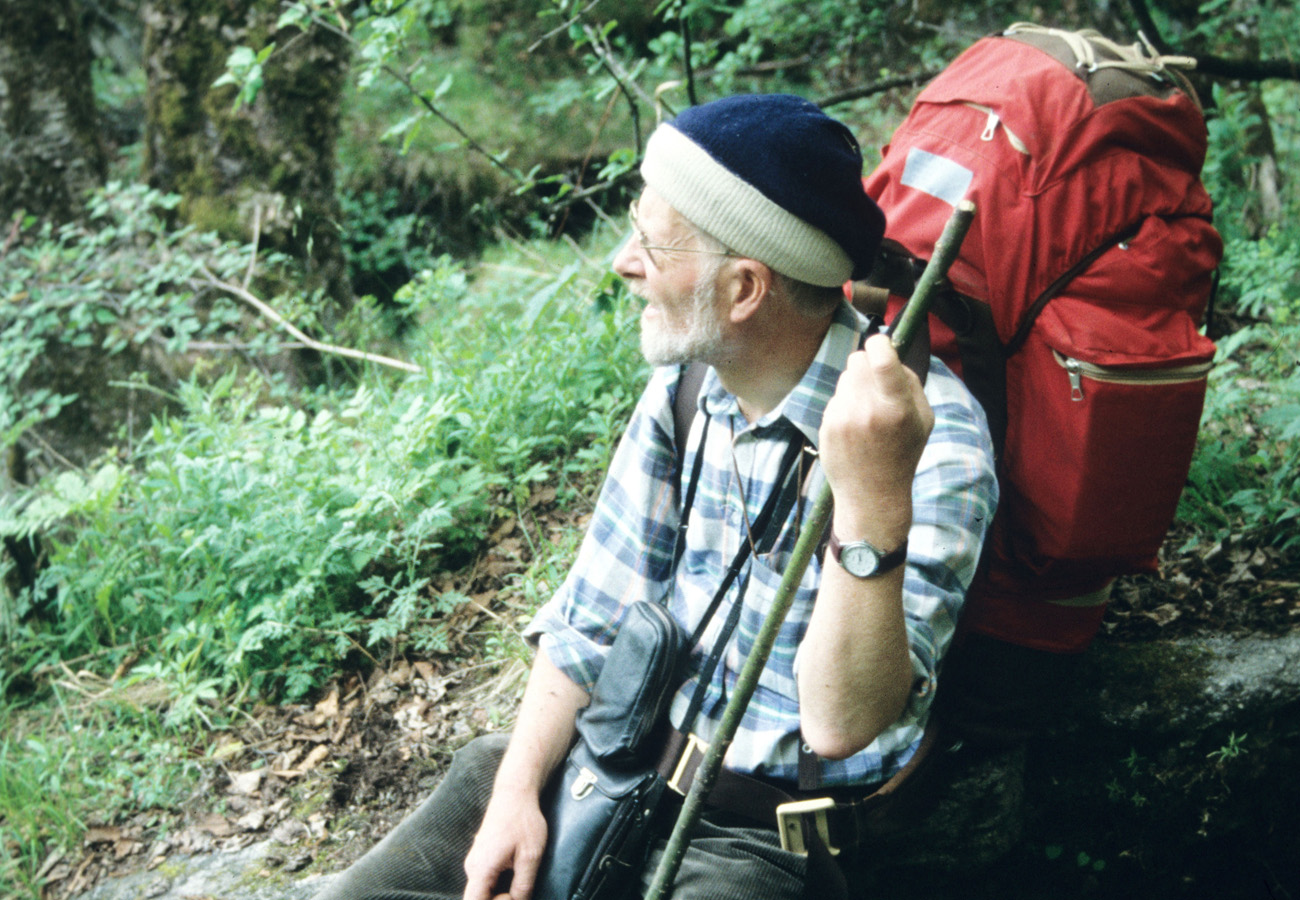Abstract
The genus Artema Walckenaer, 1837 includes some of the largest pholcid spiders and is geographically largely restricted to Central Asia, the Middle East, the Arabian Peninsula, and the eastern Mediterranean. One species has previously been known from West Africa. The first known Moroccan species, A. martensi sp. n., extends the known distribution of the genus to the northwestern limit of the African continent. The species is described from two caves in the western Anti-Atlas, but it is not troglomorphic. A comparative analysis of male carapace width in 1632 pholcid species shows that A. martensi sp. n. is the largest known pholcid with respect to this character. Plots of mean carapace sizes of newly described species on periods of time (50 years, 20 years) show that the mean sizes of newly described species have been constantly decreasing.
References
Aharon, S., Huber, B.A. & Gavish-Regev, E. (2017) Daddy-long-leg giants: revision of the spider genus Artema Walckenaer, 1837 (Araneae, Pholcidae). European Journal of Taxonomy, 376, 1–57.
https://doi.org/10.5852/ejt.2017.376
Al-Khazali, A.M. & Najim, S.A. (2018) First records of Pholcidae (Arachnida, Araneae) from Iraq. Bulletin of the Iraq Natural History Museum, 15, 179–187.
https://doi.org/10.26842/binhm.7.2018.15.2.0179
Barrientos, J.A., Brañas, N. & Mederos, J. (2019) Dos especies nuevas de Pholcidae (Araneae) de Marruecos. Revista Ibérica de Aracnología, 34, 3–12.
Blackledge, T.A., Coddington, J.A. & Agnarsson, I. (2009) Fecundity increase supports adaptive radiation hypothesis in spider web evolution. Communicative and Integrative Biology, 2, 459–463.
https://doi.org/10.4161/cib.2.6.8855
Blueweiss, L., Fox, H., Kudzma, V., Nakashima, D., Peters, R. & Sams, S. (1978) Relationships between body size and some life history parameters. Oecologia, 37, 257–272.
https://doi.org/10.1007/bf00344996
Brandl, S.J., Goatley C.H.R., Bellwood D.R., Tornabene, L. (2018) The hidden half: ecology and evolution of cryptobenthic fishes on coral reefs. Biological Reviews, 93, 1846–1873.
https://doi.org/10.1111/brv.12423
Costello, M. J., Lane, M., Wilson, S. & Houlding, B. (2015) Factors influencing when species are first named and estimating global species richness. Global Ecology and Conservation, 4, 243–254.
https://doi.org/10.1016/j.gecco.2015.07.001
Eberle, J., Dimitrov, D., Valdez-Mondragón, A. & Huber, B.A. (2018) Microhabitat change drives diversification in pholcid spiders. BMC Evolutionary Biology, 18, 141.
https://doi.org/10.1186/s12862-018-1244-8
González-Sponga, M.A. (1998) Arácnidos de Venezuela. Cuatro nuevos géneros y cuatro nuevas especies de la familia Pholcidae Koch, 1850 (Araneae). Memorias de la Sociedad de Ciencias Naturales La Salle, 57, 17–31.
Hagstrum, D. (1971) Carapace width as a tool for evaluating the rate of development of spiders in the laboratory and the field. Annals of the Entomological Society of America, 64, 757–760.
https://doi.org/10.1093/aesa/64.4.757
Huber, B.A. (2000) New World pholcid spiders (Araneae: Pholcidae): A revision at generic level. Bulletin of the American Museum of Natural History, 254, 1–348.
https://doi.org/10.1206/0003-0090(2000)254<0001:NWPSAP>2.0.CO;2
Huber, B.A. (2012) Revision and cladistic analysis of the Afrotropical endemic genus Smeringopus Simon, 1890 (Araneae: Pholcidae). Zootaxa, 3461 (1), 1–138.
https://doi.org/10.11646/zootaxa.3461.1.1
Huber, B.A. (2013) Revision and cladistic analysis of the Guineo-Congolian spider genus Smeringopina Kraus (Araneae, Pholcidae). Zootaxa, 3713 (1), 1–160.
https://doi.org/10.11646/zootaxa.3713.1.1
Huber, B.A. (2018) The South American spider genera Mesabolivar and Carapoia (Araneae, Pholcidae): new species and a framework for redrawing generic limits. Zootaxa, 4395 (1), 1–178.
https://doi.org/10.11646/zootaxa.4395.1.1
Huber, B.A. (2021) Beyond size - sexual dimorphisms in pholcid spiders. Arachnology, 18 (7), 656–677.
https://doi.org/10.13156/arac.2020.18.7.656
Huber, B.A. & Carvalho, L.S. (2019) Filling the gaps: descriptions of unnamed species included in the latest molecular phylogeny of Pholcidae (Araneae). Zootaxa, 4546 (1), 1–96.
https://doi.org/10.11646/zootaxa.4546.1.1
Huber, B.A. & Chao, A. (2019) Inferring global species richness from megatransect data and undetected species estimates. Contributions to Zoology, 88, 42–53.
https://doi.org/10.1163/18759866-20191347
Huber, B.A., Eberle, J. & Dimitrov, D. (2018) The phylogeny of pholcid spiders: a critical evaluation of relationships suggested by molecular data (Araneae, Pholcidae). ZooKeys, 789, 51–101.
https://doi.org/10.3897/zookeys.789.22781
Huber, B.A. & Kwapong, P. (2013) West African pholcid spiders: an overview, with descriptions of five new species (Araneae, Pholcidae). European Journal of Taxonomy, 59, 1–44.
https://doi.org/10.5852/ejt.2013.59
Jetz, W., Sekercioglu, C.H. & Böhning-Gaese, K. (2008) The worldwide variation in avian clutch size across species and space. PLoS Biology, 6 (12), e303.
https://doi.org/10.1371/journal.pbio.0060303
Kraus, O. (1957). Araneenstudien 1. Pholcidae (Smeringopodinae, Ninetinae). Senckenbergiana biologica, 38, 217–243.
Mammola, S., Aharon, S., Seifan, M., Lubin, Y. & Gavish-Regev, E. (2019) Exploring the interplay between local and regional drivers of distribution of a subterranean organism. Diversity, 11, 119.
https://doi.org/10.3390/d11080119
Marshall, S.D. & Gittleman, J.L. (1994) Clutch size in spiders: is more better? Functional Ecology, 8, 118–124.
https://doi.org/10.2307/2390120
Prenter, J., Elwood, R.W. & Montgomery, W.I. (1999) Sexual size dimorphism and reproductive investment by female spiders: A comparative analysis. Evolution, 53, 1987–1994.
https://doi.org/10.2307/2640458
Simon, E. (1890) Etudes arachnologiques. 22e Mémoire. XXXIV. Etude sur les arachnides de l’Yemen. Annales de la Société Entomologique de France, Series 6, 10, 77–124.
Taczanowski, L. (1874) Les aranéides de la Guyane française. Horae Societatis Entomologicae Rossicae, 10, 56–115.
Uhl, G., Schmitt, S., Schäfer, M.A. & Blanckenhorn, W. (2004) Food and sex specific growth strategies in a spider. Evolutionary Ecology Research, 4, 523–540.
Walckenaer, C.A. (1837) Histoire naturelle des insectes. Aptères. Tome premier. Roret, Paris, 682 pp., 15 pls.
https://doi.org/10.5962/bhl.title.61095


